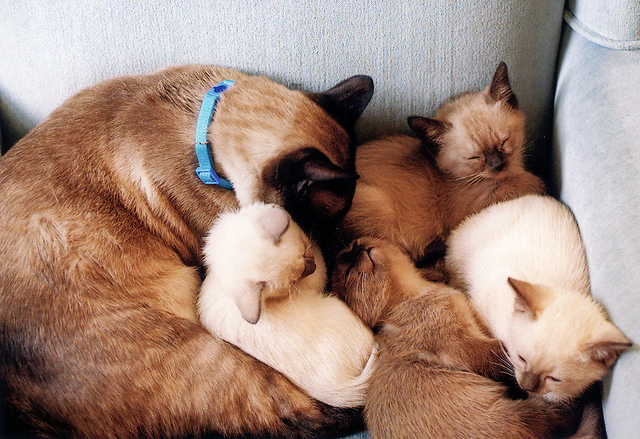This morning I was writing a horror story and I realized that the structure of a classic horror story is different than the typical hero's journey.
In this post I ask, and attempt to answer, two questions:
1) What exactly is the structure of a horror story?
2) What is the purpose of a horror story? What is it supposed to accomplish? How will we know whether we've succeeded or failed?
Let's take this in parts.
The Purpose of a Horror Story
What is a good horror story supposed to do? What is its function? That's easy! It's supposed to terrify, or at least deeply disturb. If you're not horrified by the end, then the story could be great and wonderful, but it's not a horror story.
The Structure Of A Horror Story
What are the parts of a horror story?
This is something I'm sure I'll continue to think about over the years, but here's what I've come up with so far. As you can see, I'm adapting Christopher Vogler's take on Joseph Campell's work (see The Hero With A Thousand Faces).
The initial situation/The ordinary world
There are a few parts here.
a. The hero does something normal.
The hero/protagonist is active.
Perhaps the hero goes on a date, perhaps they meet friends, perhaps they go on a road trip. This is a great place to introduce your characters. Foreshadow the dangers to come.
For example: A mother plays a game of hide-and-seek with her children. (This example is, in part, based on this.)
b. There's a problem
Something goes wrong.
For example: The mother can't find her children. The college students on the road trip get lost. In The Cabin In The Woods the GPS breaks.
At some point in the first act the theme or moral might be stated. For instance, in The Cabin In The Woods, 8.5 minutes into the movie Marty says, "Society needs to crumble, we're all just too chickenshit to let it."
c. Warning
Something happens that would give a reasonable person second thoughts about the wisdom of going forward.
For instance, when college students pull up at a gas station looking for gas and directions they are berated then given directions by someone wearing worn overalls and in dire need of dental work. (A marvelous twist is put on this trope by Tucker and Dale Versus Evil.)
Break into act two: the protagonist makes a choice
It seems to me that the break into act two occurs when the protagonist willfully ignores the warning. And that's the key word, it must be an act of will, the hero must choose to ignore the warning. At least, ordinarily. I'm sure there are horror movies that violate this rule.
Ordinarily, act two begins when the hero accepts the quest. I guess one way of looking at this is to say that, in a horror story, by ignoring the warning, the hero tacitly accepts the quest.
Initial problem is either solved or changed
Almost immediately upon entering act two the problem changes.
This is another difference from the normal story structure. Usually the problem changes, then the hero accepts the quest. It seems that in a horror often the hero ignores the warning and then either fulfills their initial goal or the initial goal changes.
For example, in The Cabin, the college students ignore the (implicit) warning and then complete their initial goal of finding the cabin. The cabin, and the area around the cabin, is the Special World of the adventure. At this point they begin exploring the cabin and try to figure out what kind of a place it is.
Other examples: The mother realizes that her kids are missing. Her goal is no longer to find where they're hiding. She knows they're gone. Now her goal is to find out who took her kids and get them back.
Fake solution
Often there is a fake solution. Something happens, an event, and the protagonist feels either that the problem has been solved, or that someone else more skilled/competent is there to handle the crisis.
For example, the mother can't find her children so she calls the police. A suspiciously short time later a police officer arrives, someone she knows, someone who can take care of everything.
Fake villain
Often when there's a fake solution, the protagonist--perhaps with the help of the real villain--begins to suspect one of her friends/allies. The fake threat is contained and the protagonist relaxes. Not long afterward, the real killer reveals himself/herself. Often they reveal themselves by slipping up in some way, for instance revealing information they shouldn't have had, or that only the killer could have had.
Climax
Protagonist and antagonist/villain fight. Usually the protagonist will win, but in a horror that often doesn't happen, not only does the protagonist lose, but their fate is worse than we ever could have imagined.
Don't forget to include a few red shirts which die in horrible, grizzly, so-gross-you-can't-watch ways.
10 Steps To Writing A Horror Screenplay
There are many ways of structuring a horror story.
In Henrik Holmberg's excellent blog post, Horror Movie Scripts - 10 Steps To Writing A Horror Screenplay, he approaches things a bit differently and gives 10 stages. He writes:
A horror movie has certain rules. If you break too many the audience will be disappointed.Here's another helpful article on the structure of a horror story: An introduction to horror films.
This is a very short, no fluff, blueprint of how to write a horror script.
- The Hook. Start with a bang. Step right into a suspense scene. ("Scream" opens with a terrifying sequence with Drew Barrymore on the phone with a killer)
- The Flaw. Introduce your hero. Give him a flaw. Before you can put your hero in jeopardy we must care for him. We must want our hero to succeed. So make him human. (In "Signs" Mel Gibson plays a priest who has lost his faith after his wife died)
- The Fear. A variant of The Flaw. The hero has a fear. Maybe a fear of heights, or claustrophobia. (In "Jaws" Roy Scheider has a fear of water. At the end he has to conquer his fear by going out onto the ocean to kill the shark)
- No Escape. Have your hero at an isolated location where he can't escape the horror. (Like the hotel in "The Shining")
- Foreplay. Tease the audience. Make them jump at scenes that appear scary -- but turn out to be completely normal. (Like the cat jumping out of the closet) Give them some more foreplay before bringing in the real monster.
- Evil Attacks. A couple of times during the middle of the script show how evil the monster can be -- as it attacks its victims.
- Investigation. The hero investigates, and finds out the truth behind the horror.
- Showdown. The final confrontation. The hero has to face both his fear and the monster. The hero uses his brain, rather than muscles, to outsmart the monster. (At the end of "The Village" the blind girl tricks the monster to fall into the hole in the ground)
- Aftermath. Everything's back to the way it was from the beginning -- but the hero has changed for the better or for the worse. (At the end of "Signs" Mel Gibson puts on his clerical collar again -- he got his faith back)
- Evil Lurks. We see evidence that the monster may return somewhere..somehow..in the future..(Almost all "Friday The 13'th"-movies end with Jason showing signs of returning for another sequel)
What are you waiting for? Go forth and write a hair-raising, blood-curdling, horror story that would terrify Freddy Krueger.
Have you ever written a horror story? If you have any tips/tricks please share!
Photo credit: "Solitude standing..." by josef.stuefer under Creative Commons attribution 2.0.










